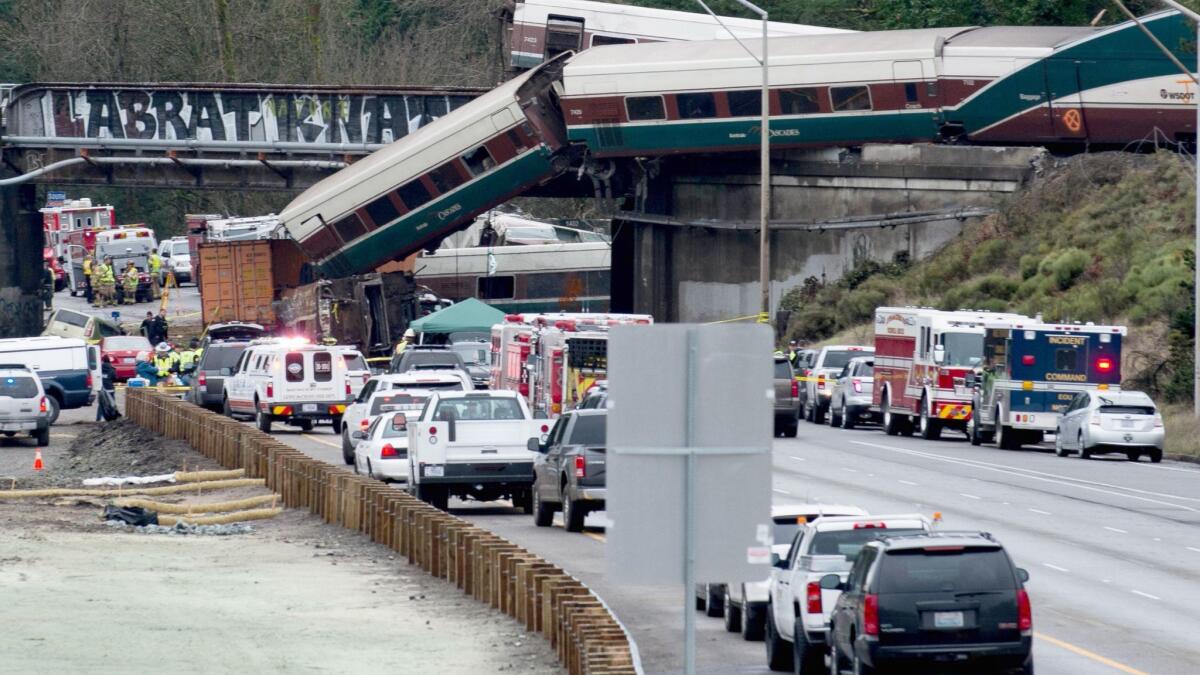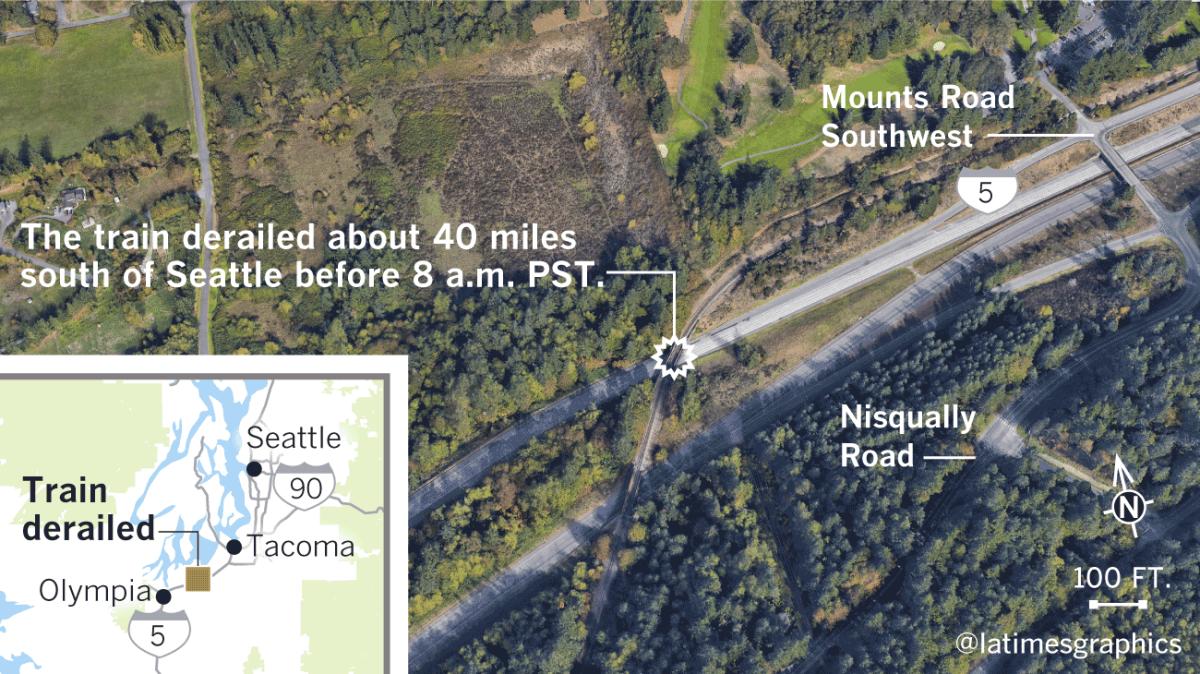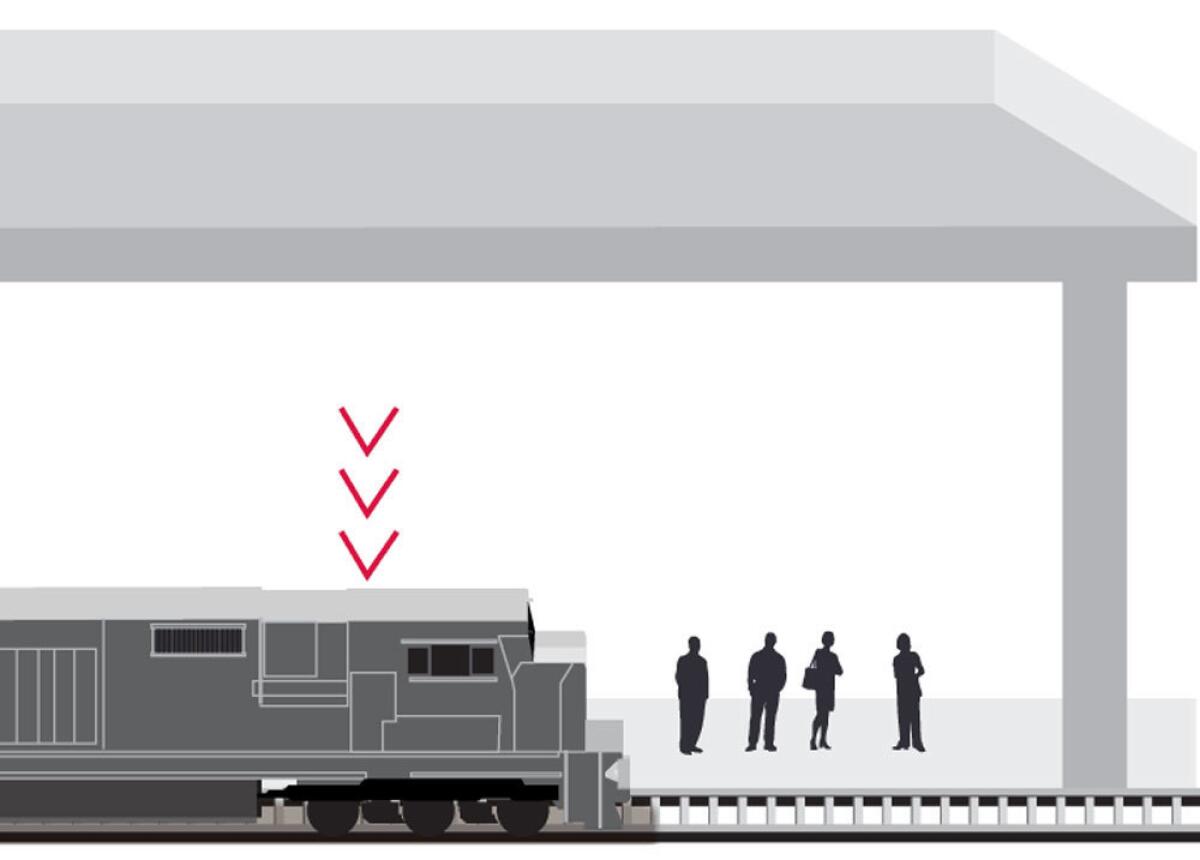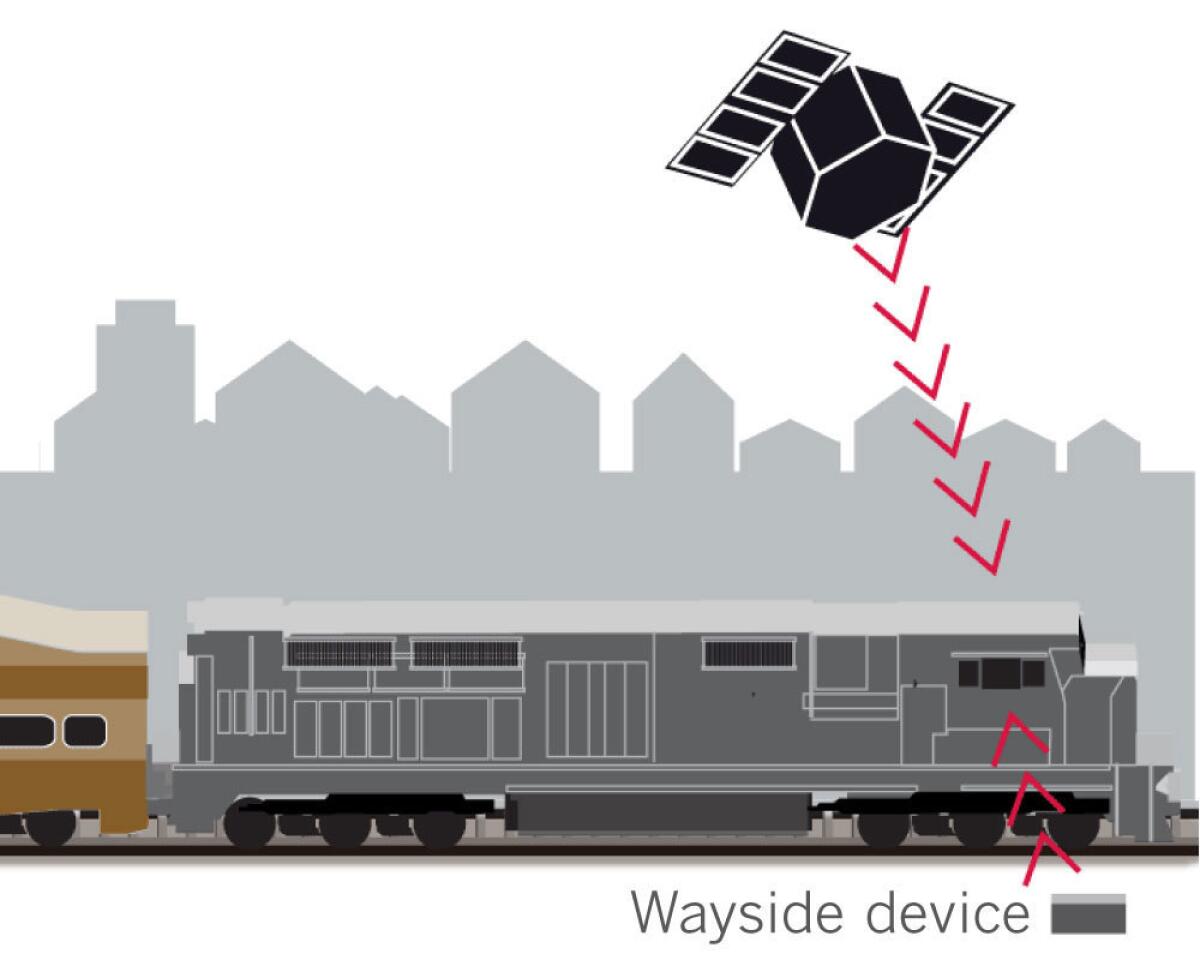Could ‘positive train control’ have prevented the Washington Amtrak crash? Here’s how it works

The Amtrak train that careened off an overpass south of Seattle on Monday, spilling three cars onto the highway below and killing at least three people, was traveling at 80 mph in a 30 mph zone, authorities said.
Positive train control — the technology that uses sophisticated electronics to monitor trains and take control of them if necessary to prevent collisions, derailments and other crashes — wasn’t in use on the stretch of track where the derailment occurred, Amtrak President Richard Anderson said.
In Southern California, Metrolink uses positive train control, or PTC, on all of its routes.

How PTC works
Before a trip, data about speed limits, the track, construction zones, locations of other trains and additional information are loaded wirelessly.

En route, the train’s position and speed are tracked via GPS. Signal status, broken rails and curves are provided from wayside devices. Using such data, the system tells the engineer when to adjust the speed of the train.

If the engineer doesn’t act, the system takes over, adjusts the speed of the train and, if necessary, brings it to a stop.

Sources: Pierce County Sheriff’s Department, Google Earth, Mapzen, OpenStreetMap, federal records and interviews with rail safety experts. Graphic is schematic.
Start your day right
Sign up for Essential California for news, features and recommendations from the L.A. Times and beyond in your inbox six days a week.
You may occasionally receive promotional content from the Los Angeles Times.



